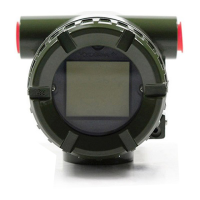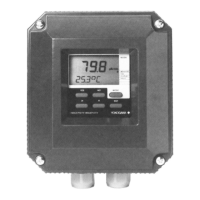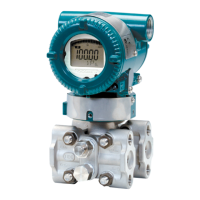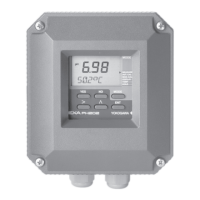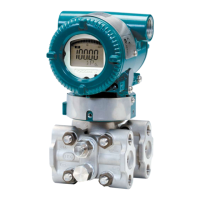<6. Maintenance>
6-2
IM 01C50G01-01EN
2. For DC voltage input
With a voltage generator, deliver input signals
corresponding to 0, 25, 75, or 100% of the input
span to the temperature transmitter. Measure
the resulting input signal with the voltmeter
(digital multimeter) and check the output value
relative to the input value.
3. For thermocouple input
Since this instrument is equipped with a
reference junction compensating function, use
a reference junction compensating function
in universal calibrator in order to compensate
for this function upon calibration. According to
the reference millivolt table for thermocouple,
obtain millivolt corresponding to 0, 25, 50, 75,
or 100% of the span, and use that power as the
input value, then deliver it from the universal
calibrator to the temperature transmitter.
Measure the resulting output signal with the
voltage meter (digital multimeter) and check the
output value relative to the input value.
4. RTD
Using a RTD as input, calibration of the
temperature transmitter is carried out via a
4-core wire connection.
As dened the reference resistor value
table of the RTD, obtain resistance values
corresponding to 0, 25, 50, 75 or 100% of the
span, and use the obtained resistance as the
input value, then deliver it to the temperature
transmitter by means of a variable resistor.
Measure the resulting output signal with the
voltmeter (digital multimeter) and check the
output value relative to the input value.
5. In Steps 2 through 4, if the output signal
deviates from the given range of accuracy
when a given input signal is delivered, adjust
the output using the handheld terminal. For
details of how to adjust the output, refer to the
additional reference, “HART Protocol”
IM 01C50T01-02EN, “Fieldbus communication”
IM 01C50T02-02EN or “BRAIN Protocol”
IM 01C50T03-02EN and the instruction manual
for each terminal.
6.3 Disassembly and Assembly
This section details the procedure for part
replacement or disassembly and assembly of
each component depending on the maintenance
process.
Before starting disassembly and assembly work,
turn off the power, and use a tool suited to the
associated work.
Table 6.2 lists the tools required for disassembly
and assembly of the instrument.
Table 6.2 Tools for Disassembly and Assembly
Tool name Quantity Remark
Phillips screwdriver
Standard screwdriver
Hexagonal wrench
Crescent wrench
Torque wrench
Box wrench
Box screwdriver
Forceps
1
1
1
1
1
1
1
1
For M10 screw
CAUTION
PrecautionsforATEXandIECExFlameproof
Type Transmitters
• For a withstand ameproof type transmitter,
as a rule, move the transmitter to a non-
hazardous location, then proceed with
maintenance and restore the instrument to
the original condition.
• For a withstand ATEX and IECEx ameproof
type transmitter, turn the lock bolt (hexagon
socket bolt) clockwise with a wrench for
hexagon head, unlock and remove the cover.
When installing the cover, it is the must to
turn the lock bolt counterclockwise and lock
the cover (locked to a torque of 0.7 Nm).
• For a withstand ameproof type transmitter,
in no case should the user be allowed to
modify the transmitter. Therefore, no user
is allowed to add a integral indicator, or use
the transmitter with the indicator removed.
Contact us for any modication.
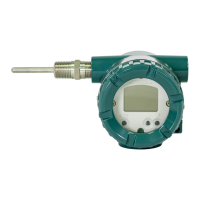
